If you’ve ever pulled back old wallpaper, you know the drywall underneath can be…messy at best. When I pulled off the wallpaper in our kid’s bathroom (that was practically falling off anyway), I was left with a rough yellow layer of wallpaper paste/glue. Their bathroom isn’t huge, but it certainly isn’t small, so I wanted to avoid sanding if I could. I tried sanding (regretfully), hot water & vinegar, hot water, and hot water & fabric softener.
If you need to remove leftover wallpaper paste without harsh chemicals, a mixture of hot water and vinegar will make quick work of scraping away the old glue. Combine half hot water with half white vinegar, and spray liberally. Then, use a spatula to scrape the residue.
That being said, there are some tricks to know, and a few other combinations you should try – every glue is different, and some may respond better than others to different combinations. I actually filmed a video on this as well, which you can check out below, or right here on my YouTube Channel.
In this post, I’ll be going over a few different combinations of liquids I tried to naturally remove wallpaper paste including hot water and vinegar, plain hot water, hot water and fabric softener, and a steamer (as well as a few other solutions I came across, but didn’t try). I’ll also go over when and where a sander is necessary, and the tools you’ll want and need to naturally remove wallpaper paste/glue.
Check out the before and after on my $1000 kids/guest bathroom makeover here! I’m so thrilled with the end result, it feels like a glam spa in my own home.
Solutions To Naturally Remove Wallpaper Paste
#1 Hot Water and Vinegar
The combination of hot water and vinegar worked flawlessly for me – though I went back when the combination was lukewarm/room temperature and it worked just as well. I also found that letting the mixtures sit on the wall for a second before trying to scrape it away helped with removing the glue. Apparently, the acidity of the vinegar eats through the glue and softens it, making it much easier to scrape off.
Another vote for hot water and vinegar is cost – though it’s just a tad more expensive than hot water alone, it’s certainly cheaper than hot water and fabric softener.
#2 Hot Water
Plain hot water does not work nearly as well as hot water and vinegar, and it was a lot messier. That being said, depending on the adhesive used, it could work. As with anything, test a small area with various solutions to see what works best for you!
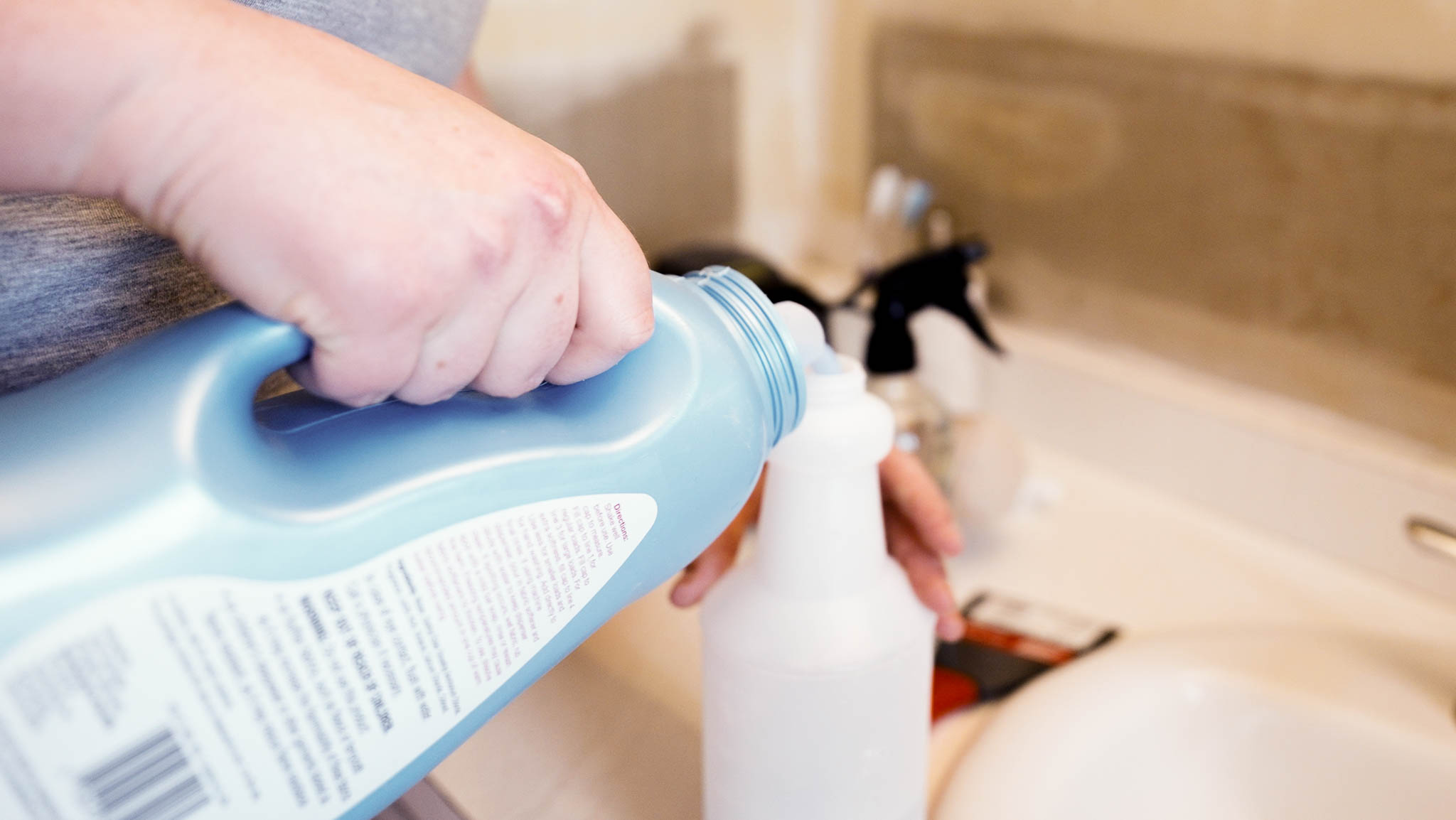
#3 Hot Water and Fabric Softener
Hot water and fabric softener smelled *amazing*, but it didn’t really offer any advantages when compared to hot water and vinegar. In fact, the smell was so strong I had trouble staying in the room, even though it was well ventilated. Sure, I could have gone with a less scented or more organic variety of fabric softener, but it would be SO much more expensive when compared to vinegar and water.
If you do find that this mixture works well for your particular adhesive, just be sure to work in a well ventilated area so you don’t make yourself sick!
#4 Steamer
I didn’t show this in the video for fear of ruining my camera with steam, but I also tried steaming the wallpaper paste away. I would not recommend it – it was messy, hot, and inefficient.
#5 Sander
For areas that you can’t (and shouldn’t) spray a liquid, like around live outlets, it’s best to just use a sander. I don’t love using them (which is one of the reasons I wrote this whole post) – they’re loud, messy, dusty, and the vibrations end up hurting my hands after a while…but they’re the best option when you have no other choices.
Other Solutions for Removing Wallpaper Paste
I tried the 4 solutions above, but they’re not the only ones out there. In researching this project, I’ve also come across:
- Dish soap and hot water
- Commercial wallpaper stripper (though I’d stay away from this unless you really need it because of all the chemicals)
- Baking soda and hot water (worked into a paste)
- Baking soda and fabric softener (worked into a paste)
- TSP, or tri-sodium phosphate (but it’s really bad for the environment, so try to only use it if you have to)
- A heat gun (I’m skeptical about this, but it’s still worth mentioning)
If none of the solutions I tried worked, I would probably have given these a go, but vinegar and hot water worked so flawlessly, I didn’t feel the need to try them out!
Summary of Natural Solutions to Remove Wallpaper Paste
In summary, if you’re going to be removing wallpaper paste, you don’t want to use a commercial cleaner, and you don’t want to sand, hot water and vinegar is the way to go.
| Hot Water & Vinegar | Worked well | Very inexpensive |
| Hot Water | Didn’t really work | Extremely inexpensive |
| Hot Water & Fabric Softener | Worked okay | Expensive |
| Steamer | Didn’t really work | The water is cheap, but the tool is not |
It’s really hard to photograph almost the almost microscopic bumps that wallpaper leaves behind, but here’s a illustration of what things should look like before and after removing the paste:
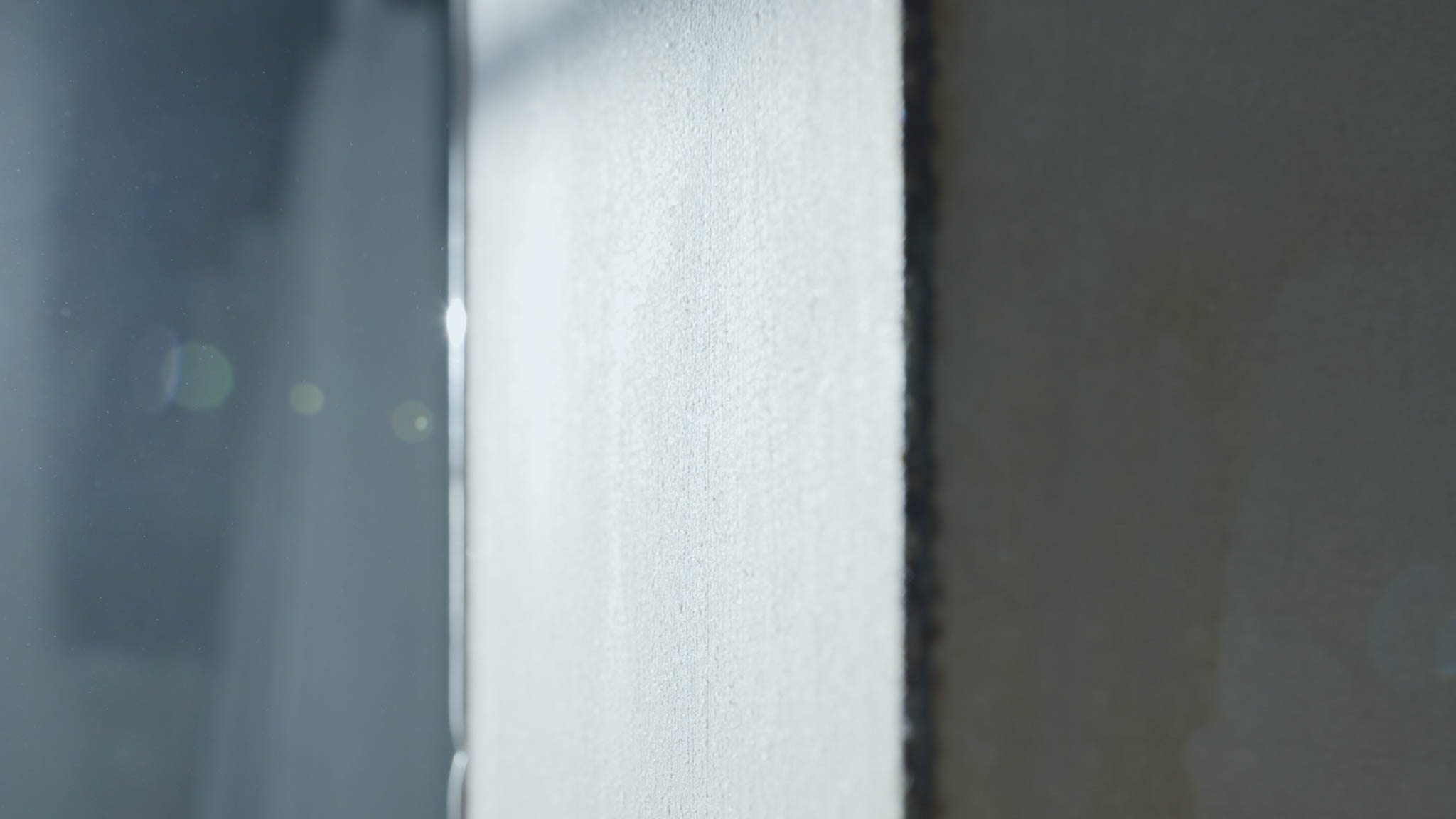
Before scraping with hot water and vinegar
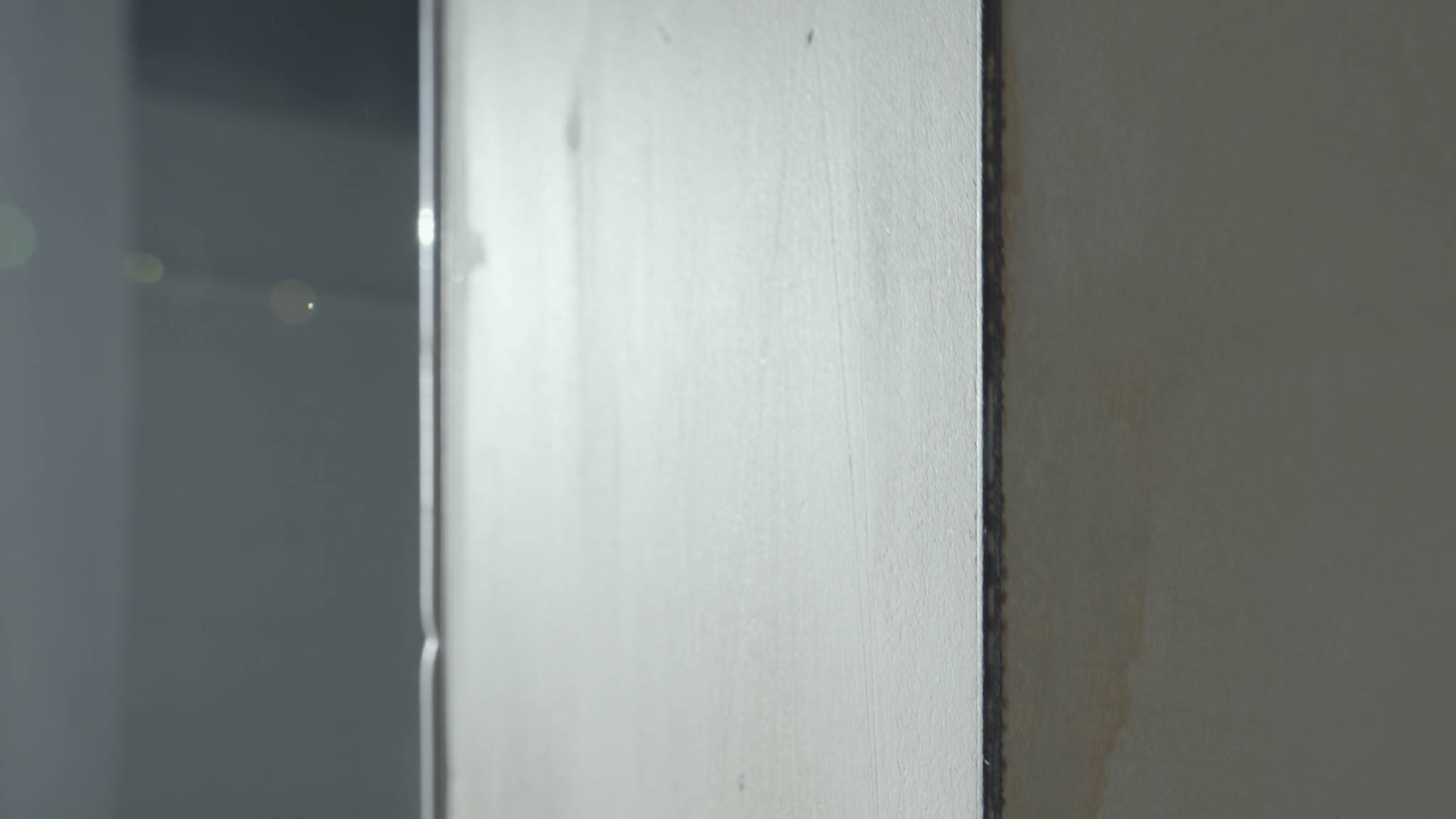
After scraping with hot water and vinegar
Tools You’ll Want and Need To Naturally Remove Wallpaper Paste/Glue
The only tools you really need to naturally remove wallpaper paste are:
- A scraper
- A spray bottle with hot water and vinegar
- A bucket or something to collect the residue in
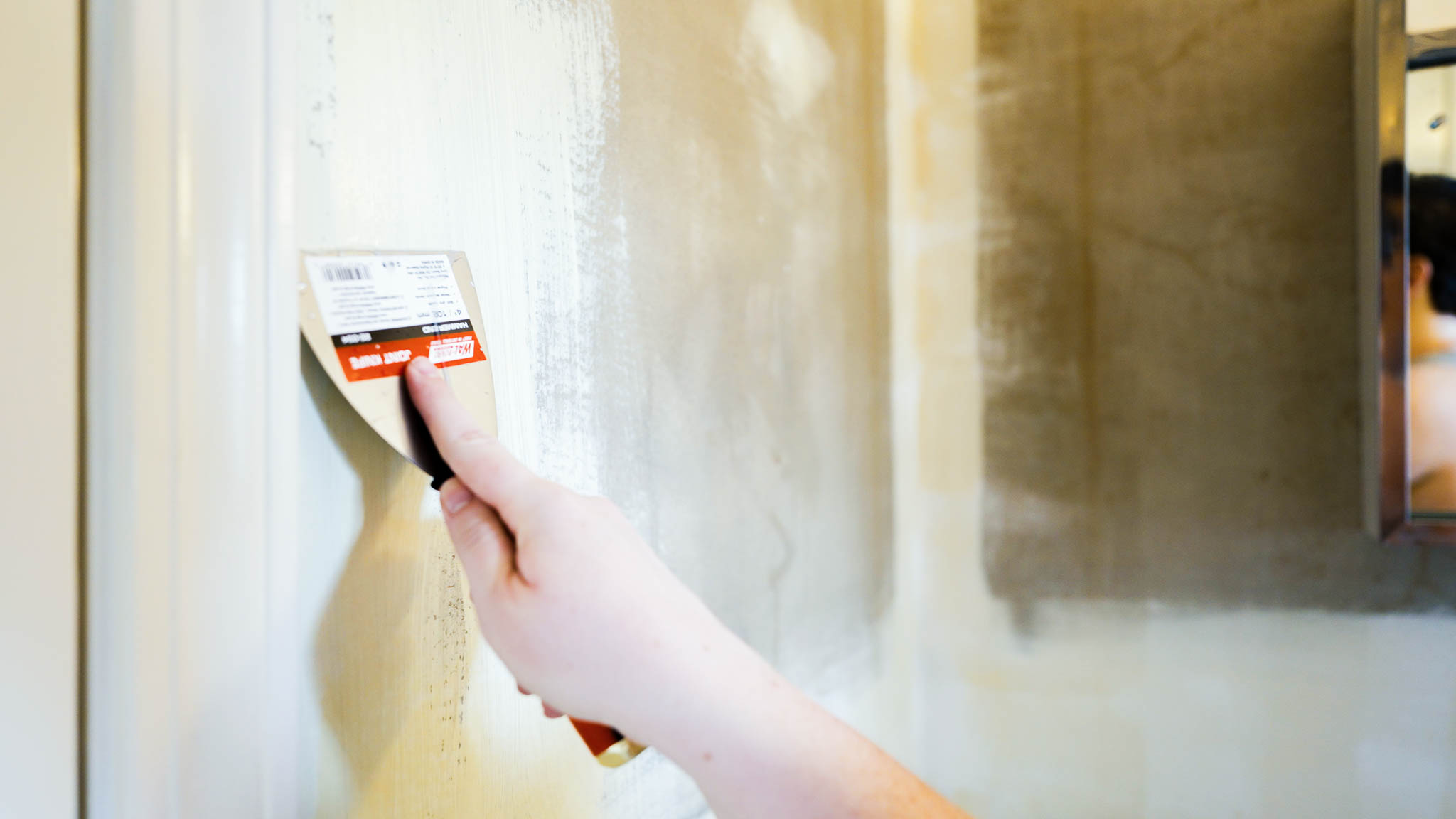
That being said, there are a few other things you might want to think about picking up if you’re going to take on this project:
- Tarps for the floor (especially if you have marble or another porous floor)
- Rubber or vinyl gloves (so your hands don’t smell like vinegar for the rest of the day)
- Sponges (I love Scrub Daddy sponges, but any sponge will do!)
- Rags or Microfiber Cloths to wipe off your scraper
- A powerful light to help you see where glue still remains (Here’s a wired version and here’s one from my favorite cordless brand, Ryobi)
Metal Scrapers are sharper and I’ve found they make it easier to get the glue off, but plastic scrapers are great too, and are less likely to damage the walls. And if you’re just starting out with DIY, consider reading my post on the 10 Beginner Tools EVERY DIYer Should Own.

How To Naturally Remove Wallpaper Paste
Step One: Prep the Room
- Turn off the power if you’ll be working near outlets
- Tape off any vents, baseboards, and trim you don’t want to get wallpaper goo on
- Cover or remove any surfaces/items you don’t want to get wallpaper goo on
- Prepare the natural cleaning solution (50% hot water and 50% vinegar)
I also like to bring all the tools I’ll be using into the room at this point – it keeps me focused on the task at hand, and makes the whole process seem faster!
Step Two: Spray The Walls, One Section At A Time
- Spray a 5’x5′ or so section liberally, but not the whole room. The vinegar and water solution will dry relatively quickly, so it’s best to work in one area at a time.
- I only needed to wait about 15-30 seconds for the glue to soften since it was so old, but you may need to wait a bit longer.
- Start high and work down – the solution will drip, so let gravity help you!
- Using a metal scraper, slough the goo off the wall and into a bucket or trash bag, wiping your scraper with each pass on a rag or paper towel
- Repeat until you’ve scraped the whole room, avoiding the outlets.
Step Three: Work Around Outlets and Light Switches
- If there are any sections around outlets or light switches, either use a rag to keep the solution from dripping inside the electrical box, or use a sander to take care of those sections
- If you do end up using a sander, be sure to wear a mask and wait until the wall is dry – wet sanding could tear up the thin paper that sits on top of drywall
Step Four: Clean, Patch, Prime, and Paint!
Once you have all the wallpaper paste removed, clean the room, patch any holes or imperfections, and you’re ready to prime! You’ll want to wait at least 24 hrs after removing the wallpaper paste to prime the walls. Priming is definitely necessary once you’ve removed wallpaper paste, since the wall underneath has likely taken a beating. Once you’re primed and ready to go, paint the room or add any other treatments you’d like. If you’re looking to add a less permanent wallpaper on top, I wrote an excellent post with 24 sources for peel and stick wallpaper, which you can find here.
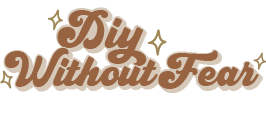
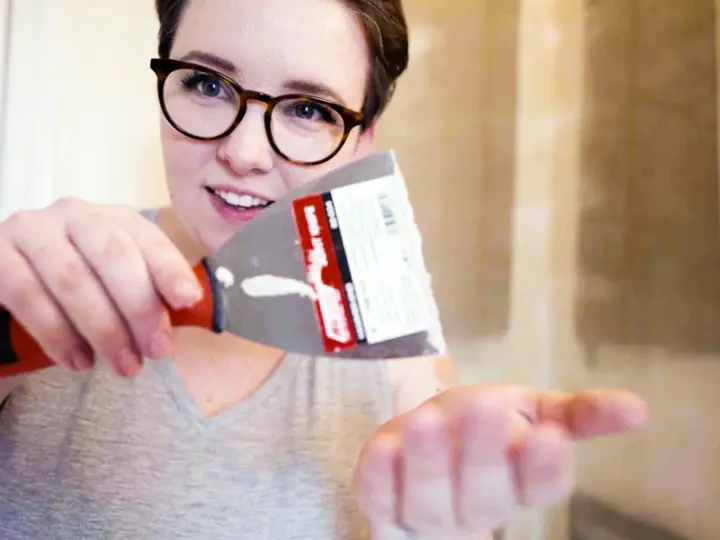
Donna
Monday 11th of April 2022
Loved the article. I used the water and fabric softener ( dollar store so not too pricey). Did this before seeing your article. My question is what to use to get rid of those last little fuzzies from the wallpaper backing or I guess the small leftover pieces of some glue still on the wall? Hard to see but can feel them with the hand.
Catherine
Tuesday 12th of April 2022
Hi Donna!
Mine was so old it completely broke down and was removed with fabric softener and a light sanding - if yours is a little younger and still sticky, I'd say give it a light sanding and you should be good to go!